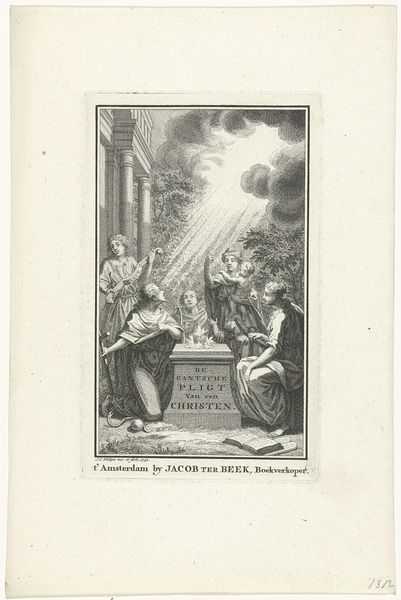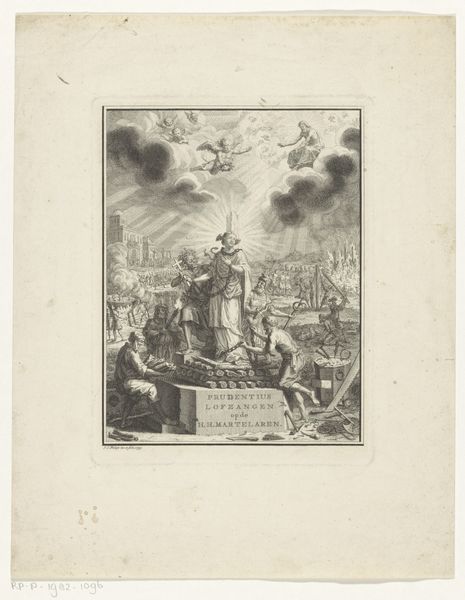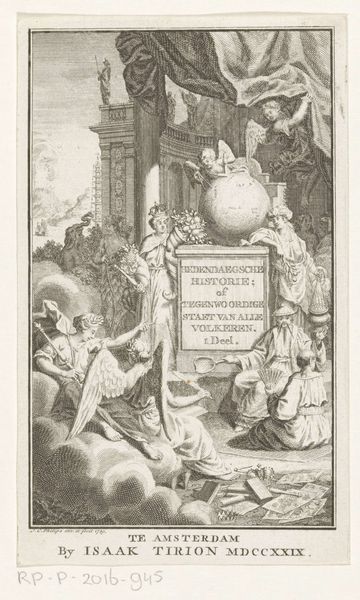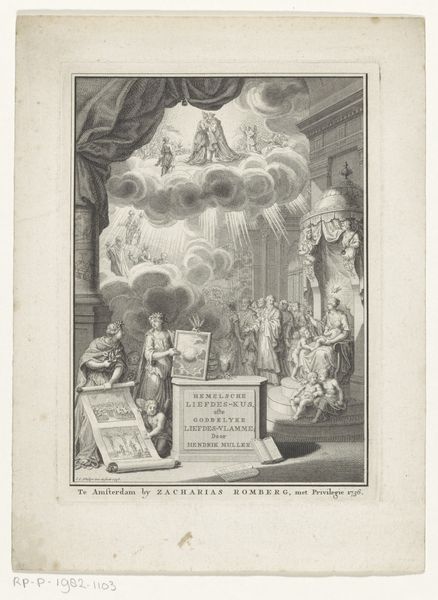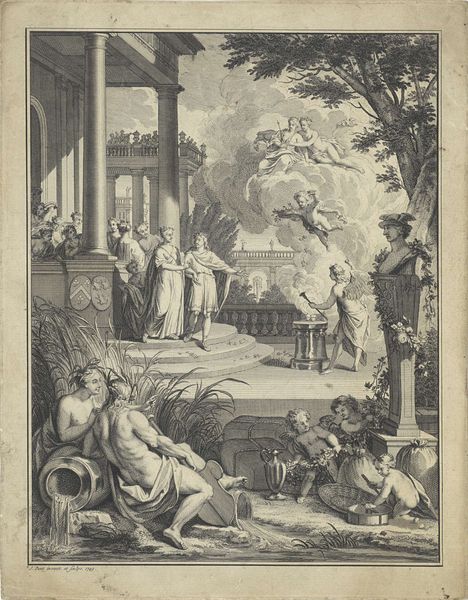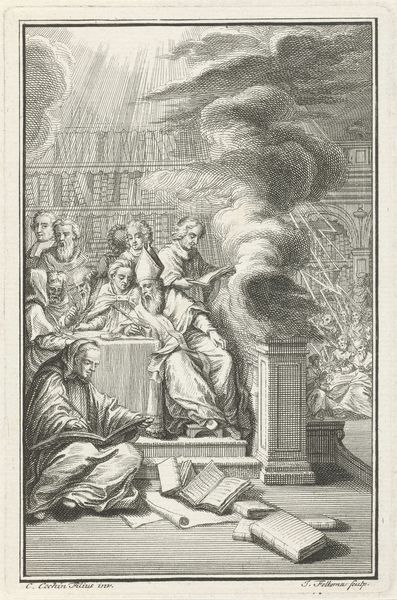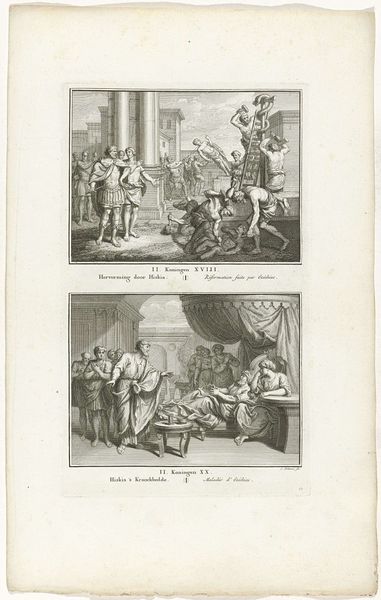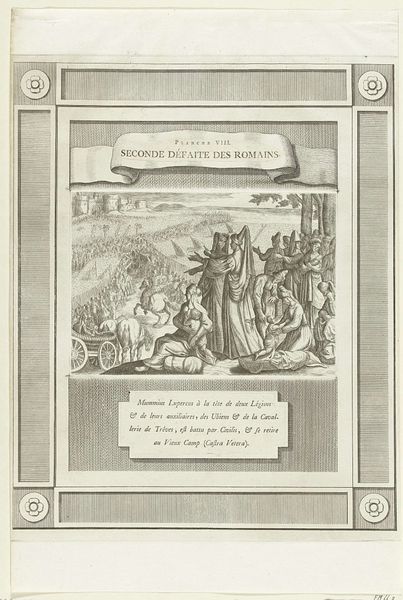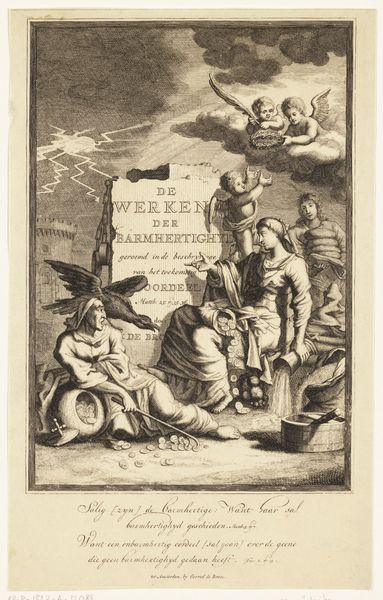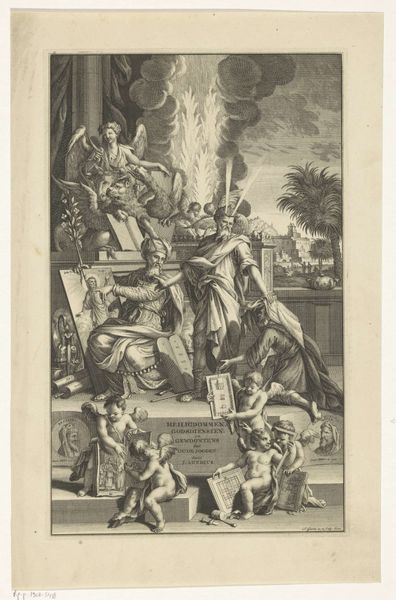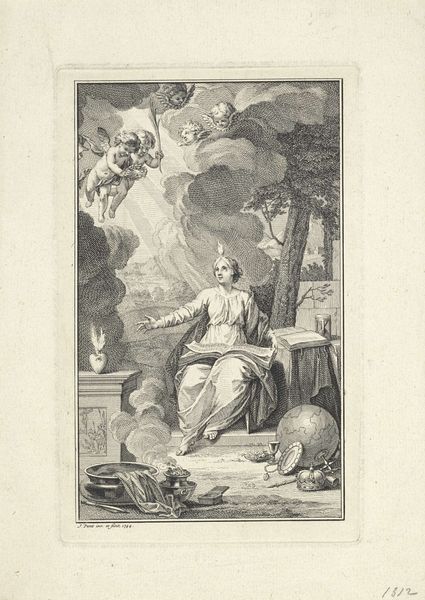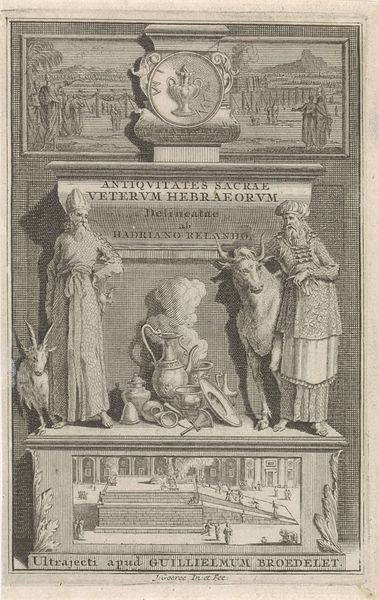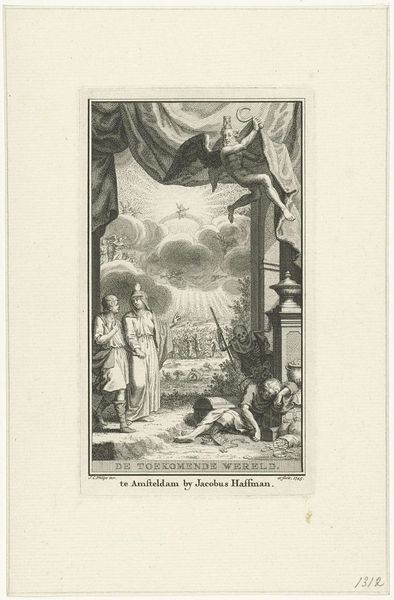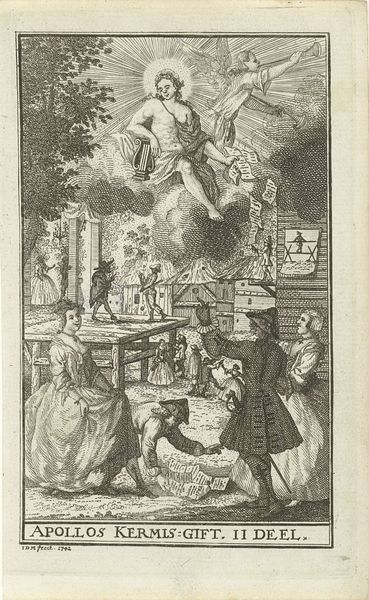
etching
#
allegory
#
baroque
#
dutch-golden-age
#
etching
#
old engraving style
#
figuration
#
history-painting
Dimensions: height 138 mm, width 84 mm
Copyright: Rijks Museum: Open Domain
This is an etching, made by Jan Caspar Philips in Amsterdam around the mid-18th century. It's an allegory, meaning that the scene is symbolic rather than literal. Etching is a printmaking technique that involves using acid to corrode an image into a metal plate, which is then inked and printed onto paper. Here, we see Philips' skillful control of the etching needle and the corrosive acid; he uses these to create a complex composition with figures, landscape, and text. He coaxes a full range of tonal variation from his materials to build this scene. Consider that in Philips' time, printmaking was not just an artistic endeavor, but a commercial one. Prints were a primary means of disseminating information and imagery. The labor-intensive process of etching meant that skilled artisans were in demand, but also subject to the economic forces of the time. By understanding the materials and techniques of etching, we can better appreciate both the artistic skill and the social context in which this print was made.
Comments
No comments
Be the first to comment and join the conversation on the ultimate creative platform.
